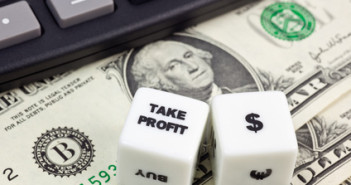View from the dealing floor.
Tarik Chebib works on IG’s dealing floor. For more about forex visit: https://www.ig.com/au/forex-
In order to trade forex, or FX, one needs to devise a strategy to take advantage of rapidly changing circumstances. There is no shortcut to developing your strategy as it needs rigorous testing of how it fares in different situations. This means that you will need to invest a considerable amount of time analysing charts, reading the news and practising restraint. This last point may seem strange at first, but, as you will later learn, is often a neglected one.
Do your research
Just like in any profession, it is important to research the currency pairs you are interested in trading. Formulate a catalogue of questions which need to be answered before trading any particular pair. It can involve questions such as:
1. How strong is economy A compared to B at the moment? This can be answered by looking at recent GDP, unemployment and manufacturing/service PMI figures etc.
2. Is one of the currencies considered to be a safe haven? Historically, the US dollar has always been seen as a safe haven but this can change as recently experienced with the US debt ceiling crisis.
3. How has the pair reacted to different news in the past? Backtesting allows traders to put news into perspective and analyse how a currency pair reacts to it.
Stay on top of the news
Once you have identified what moves a particular pair, it is of paramount importance to follow the news. Sources can vary from major newspapers to specific websites concentrating on the economy of a particular country.
Economic fundamental announcements such as the US unemployment figures or the ‘non-farm payrolls’ have the potential to influence every currency pair related to the US dollar. What is important, however, is to look at how it relates to your currency pair.
While fundamentals are usually what drives a currency pair, technical analysis is also just as important. Analyse charts to understand how different news have played out for your currency pair, historically. Visualise turning points, identify support and resistance levels and spot the underlying trend. Once this has been done, it is much easier to learn how to interpret market updates and to position yourself accordingly in the future.
Focus
This exercise can be overwhelming at times and therefore traders need to be selective. Choose a specific currency pair and start to master it by learning the do’s and don’ts. Every currency pair correlates to something else in financial markets. For instance, USD/JPY is highly positively correlated to the Nikkei. To identify correlations, it is best to place charts on top of each other as the visualisation process can often help tremendously in eliminating any doubts.
In those moments when the markets do move rapidly, experienced traders know to trust in their strategy and literally sit on their hands. What you do not want to do is get carried away by your emotions and change your strategy once your trade is in place.
Indicators
Limit the use of indicators to the absolute minimum as they can often be distracting. There are many successful traders that trade forex by using only support and resistance lines.
To conclude, develop a balanced strategy incorporating fundamental and technical analysis focusing on a limited number of currency pairs enabling you to trade FX successfully.
This information has been prepared by IG Markets Limited. ABN 84 099 019 851, AFSL 220440. We provide an execution-only service. The material on this page does not contain (and should not be construed as containing) personal financial or investment advice or other recommendations, or an offer of, or solicitation for, a transaction in any financial instrument, or a record of our trading prices. No representation or warranty is given as to the accuracy or completeness of the information. Consequently any person acting on it does so entirely at his or her own risk. The information provided does not have regard to the specific investment objectives, financial situation and needs of any specific person who view it. IG accepts no responsibility for any use that may be made of the comments and for any consequences that result.
